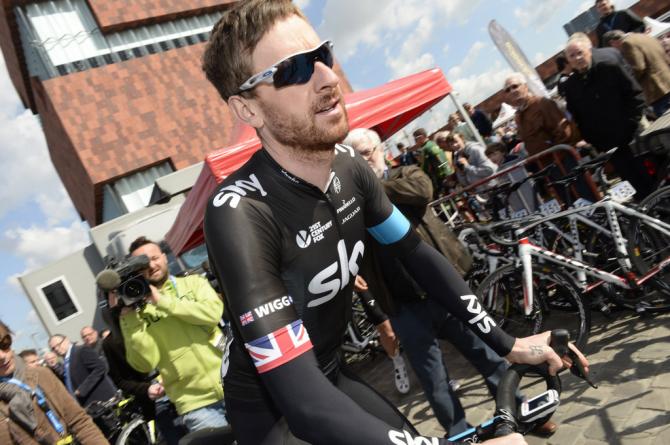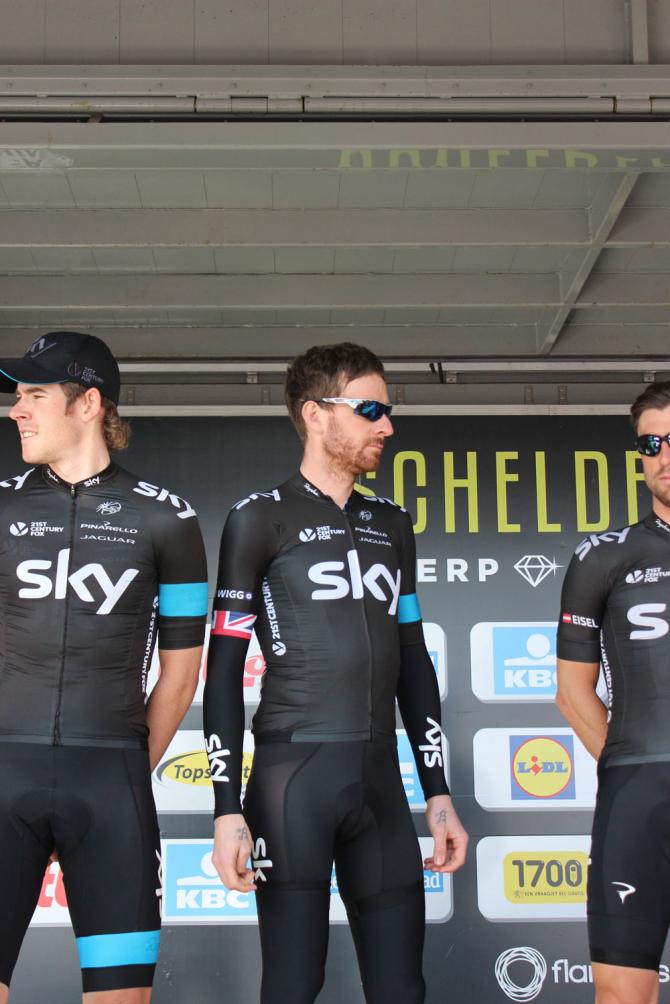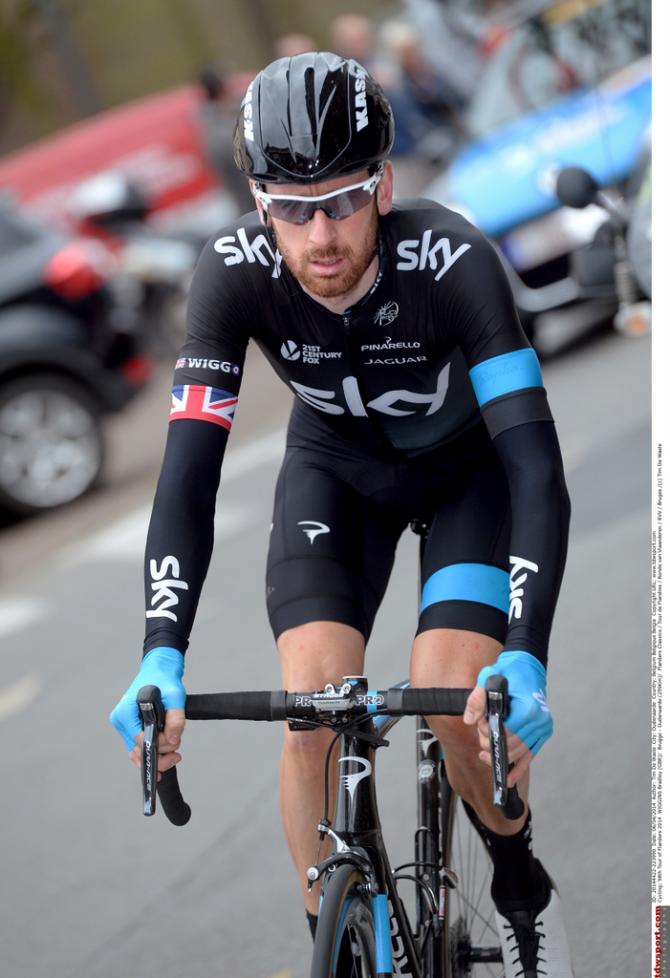Mixed opinions in peloton on Wiggins’ Paris-Roubaix hopes
Phinney, Pozzato and Hayman weigh up Sky rider’s prospects



When Bradley Wiggins lines up in Compiègne’s Place du Général de Gaulle for the start of Paris-Roubaix on Sunday morning, he will become the first past Tour de France winner to do so since Greg LeMond in 1992.
It’s tempting to say that this is a consequence of the increasing specialization in cycling that took place in the 1990s, when the distinction between classics riders and stage racers became ever more defined, but the reality is that Paris-Roubaix turned into a race for specialists sooner than any other.
Bernard Hinault’s famous 1981 victory is the last time a Tour winner has also gone on to land Paris-Roubaix, and in the past half a century only three other men have worn yellow in Paris and triumphed on the Roubaix velodrome – Felice Gimondi, Jan Janssen and Eddy Merckx. Indeed, Sean Kelly – who won in 1984 and 1986, and later took the Vuelta a España in 1988 – is the last man to inscribe both a major stage race and the Queen of the Classics on his palmarès.
Ironically, then, considering LeMond’s own reputation as the pioneer when it came to the big names picking and choosing their targets, by the time he rode to 9th place at Roubaix in 1992, it had already been established as a event apart, where stage racers, by and large, dared not to tread.
Against that backdrop, it’s no surprise that Wiggins’ decision to make a target of Paris-Roubaix this spring has elicited such intense interest, and it’s easy to understand why doubts have been cast on his prospects. Reigning champion Fabian Cancellara was among the first to air such reservations, noting in February that “with Tour de France weight you’re not going to go anywhere,” although he would later add diplomatically that “everyone is welcome to Roubaix.”
Wiggins, of course, is now more corpulent of figure than when he suddenly and surprisingly emerged as a skeletal grand tour contender in 2009 – when, incidentally, he also finished 25th at Paris-Roubaix – and his former Sky teammate Mat Hayman points out that he is no neophyte when it comes to the cobbles either, having reached the Roubaix velodrome on three previous occasions.
“It’s not as foreign to him as everyone thinks. There were years when he was riding the classics,” said Hayman, who raced alongside Wiggins in his last attempt in 2011. “I’ve seen a few things. He’s a phenomenal athlete and he can do remarkable things on the bike. He’s not foreign to that race.”
Get The Leadout Newsletter
The latest race content, interviews, features, reviews and expert buying guides, direct to your inbox!
Pursuit background
Taylor Phinney, a man with a similar track grounding to Wiggins and a natural aptitude for the pavé – he won the under-23 version of the race in 2009 and 2010 – believes that the Englishman’s previous life as a pursuiter means that he is well-suited to the rigours of Paris-Roubaix.
“It’s definitely not automatic but when you’ve got someone who’s an individual pursuit specialist, someone who’s really good at five-minute efforts, that’s where Roubaix is great,” Phinney said last week. “Individual pursuit is all about power and holding it for a certain period of time and that’s what riding over the cobbles is.
“It’s not an entire day of time trialling but an entire day of those steady efforts. I think Roubaix is quite suited to a guy like Brad and that’s why I think he’s going to have a good ride next weekend.”
Filippo Pozzato, second in Roubaix in 2009, agrees that Wiggins has the physical attributes to perform well over the pavé, but questions whether he is psychologically prepared to battle for position on the approach to each sector, pointing to his visible discomfort on slippery descents at last year’s Giro d’Italia.
“Wiggins is very, very strong in terms of numbers but at Roubaix, with that style of racing he has, I don’t think he can do anything,” Pozzato told Cyclingnews. “I’ve seen Wiggins riding and he’s a bit like me: he’s always at the back of the peloton with a gap of ten metres in front of him. I have the same problem in these races, and if you’re always at the back when you get to the pavé, you have to make twice the effort just to get up to the front again.”
“If you don’t hit the Arenberg Forest in the first 40 riders, then your race is over there and then,” Pozzato warned. “I don’t know, maybe he’ll turn up so strong that he can hit the Forest out in front, in which case I’d say he could do something. His actual pedalling style could be suited to the pavé, but it’s his overall way of riding that’s the problem – it doesn’t suit this kind of race. And like I said, my style of riding doesn’t suit these races either…”
When Wiggins opted to drop Dwars door Vlaanderen from his programme for the Volta a Catalunya, and then eschew the Catalan race in favourite of a mountain training camp, fresh doubts were cast upon his true ambitions for Paris-Roubaix, but his cameo at the Tour of Flanders last weekend suggested that he was motivated to perform: “He wasn’t fighting it out for the win but he wasn’t ridiculous either,” as L’Équipe put it.
Realistic in his ambitions for Paris-Roubaix – “It would just be nice to be in their company in the final,” he said of Cancellara and Tom Boonen – Wiggins cut a far more relaxed figure at Scheldeprijs during the week than he had, say, at last year’s ill-fated Giro d’Italia, where he often gave the impression of a man who simply did not want to be there.
“That’s what I think it comes down to in the classics,” Hayman said. “You have to want to be there and you have to put yourself on the line. If he’s willing to do that, then with his physique he can do what he wants.”

Barry Ryan was Head of Features at Cyclingnews. He has covered professional cycling since 2010, reporting from the Tour de France, Giro d’Italia and events from Argentina to Japan. His writing has appeared in The Independent, Procycling and Cycling Plus. He is the author of The Ascent: Sean Kelly, Stephen Roche and the Rise of Irish Cycling’s Golden Generation, published by Gill Books.